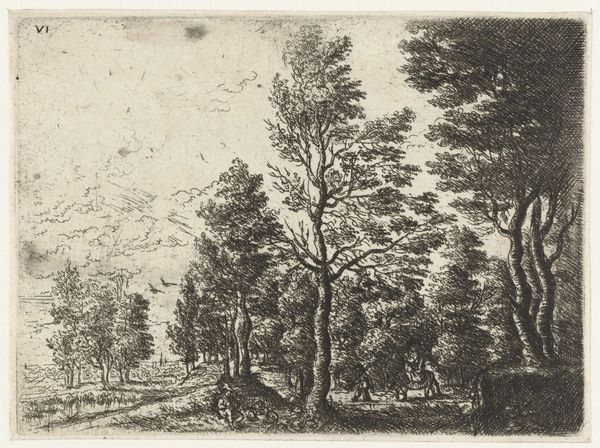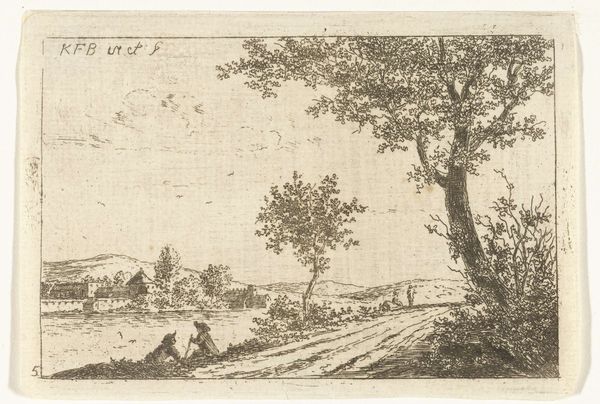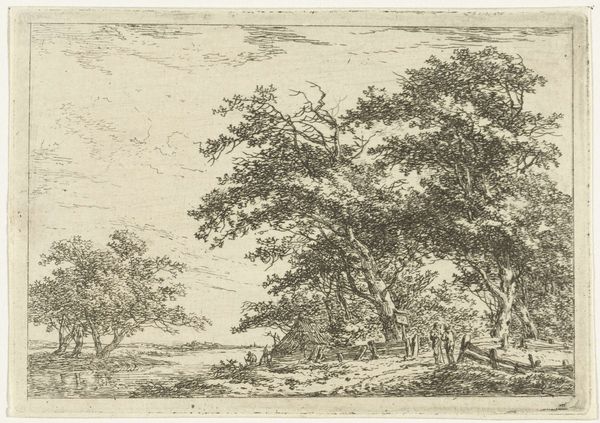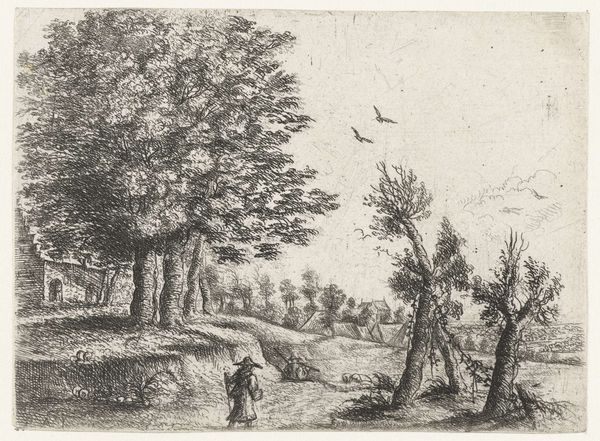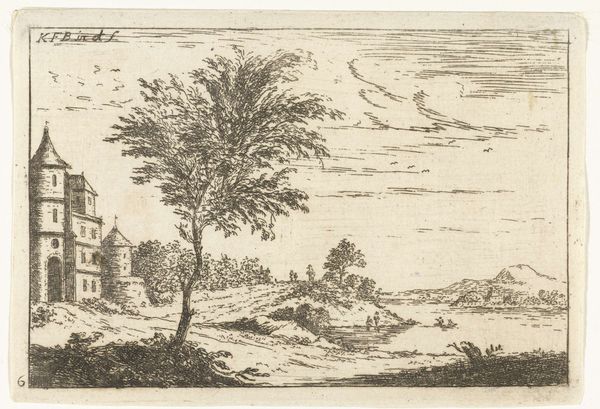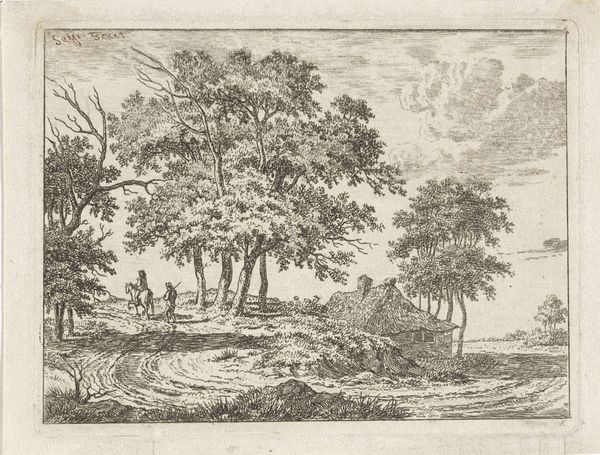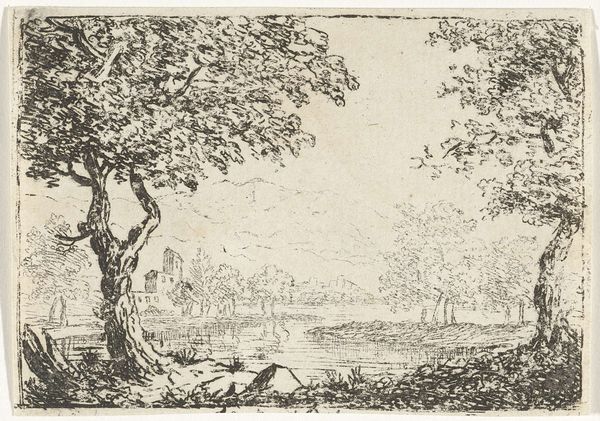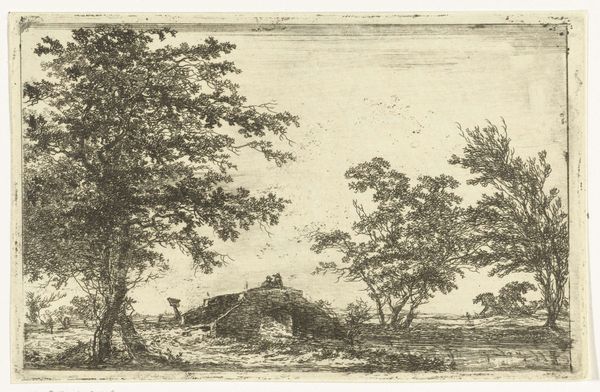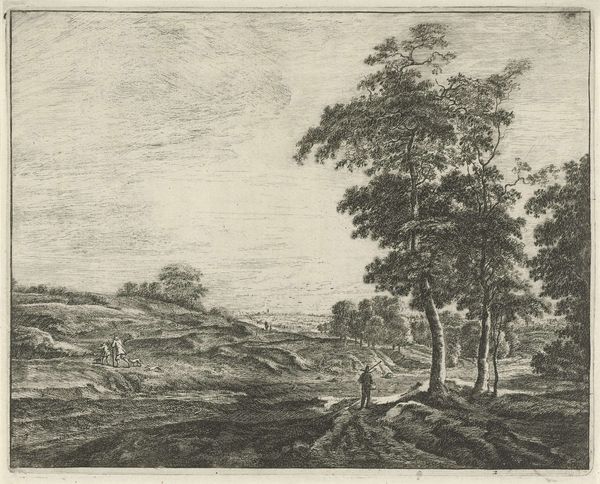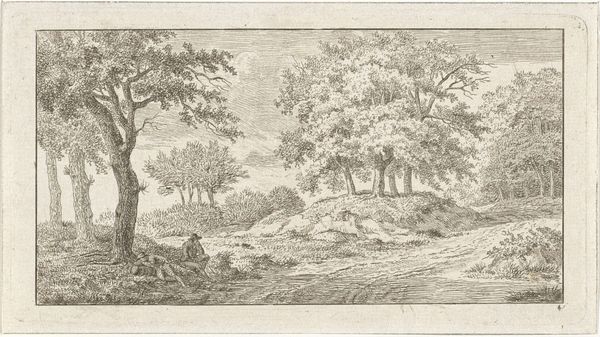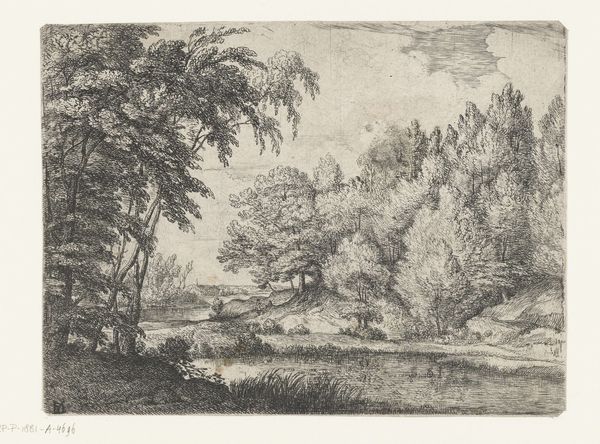
drawing, print, etching
#
drawing
#
baroque
#
dutch-golden-age
# print
#
etching
#
landscape
#
etching
Dimensions: height 90 mm, width 130 mm
Copyright: Rijks Museum: Open Domain
Editor: Here we have "Landscape with Shepherd and Sheep" created between 1637 and 1679 by Philips Augustijn Immenraet, currently residing here at the Rijksmuseum. It's an etching and, right away, I notice the light. There's such delicate detail with the sky. What compositional choices stand out to you? Curator: Observe the arrangement of forms: the large tree on the right, the flock of sheep and the tiny figure of the shepherd placed lower and closer, offset by the distant church and sky. How does this structure lead your eye across the image? Editor: It does create a flow...almost a circular movement starting with the dark, denser area and up toward the light clouds. The placement of that shepherd really emphasizes the landscape. Why make him so small, almost an afterthought? Curator: Consider how scale and relative proportions within the composition impact the pictorial balance. The artist guides our vision using contrasts—light and shadow, density and sparsity. What visual evidence suggests this is a meditation on space itself? Editor: So, not just about sheep, trees, and churches? The depth created by varying the hatching? Curator: Exactly. Notice how the artist uses subtle gradations to generate a feeling of depth and to invite contemplation. Are we observing or participating? Are we within this pictorial space, or simply apart from it? Editor: That's a great question! I’m so used to thinking about the "meaning" of the shepherd, I didn't even really consider how the marks and lines create a sense of spatial depth...thank you. Curator: A fruitful investigation.
Comments
No comments
Be the first to comment and join the conversation on the ultimate creative platform.
